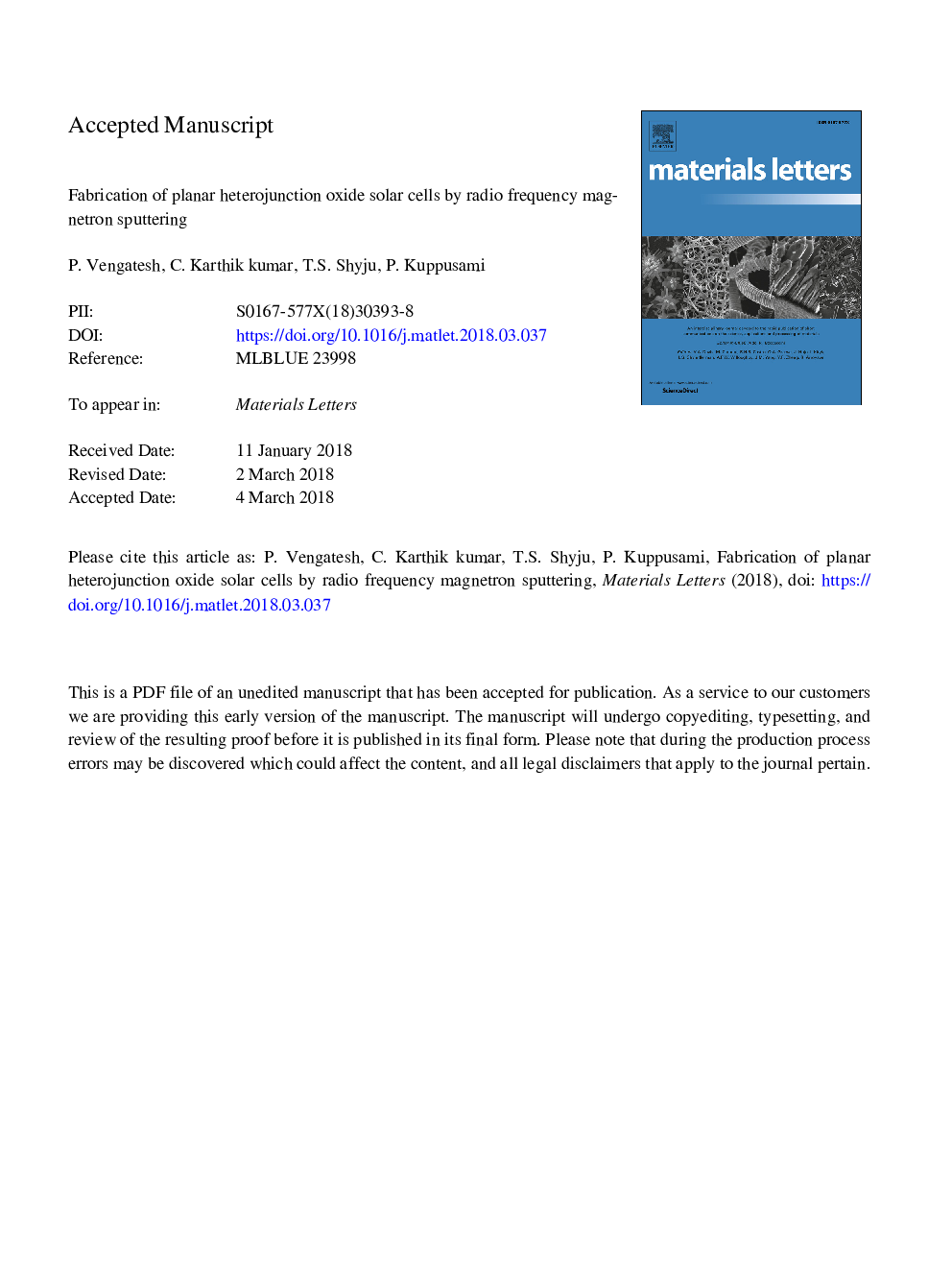| Article ID | Journal | Published Year | Pages | File Type |
|---|---|---|---|---|
| 8013728 | Materials Letters | 2018 | 10 Pages |
Abstract
In this study, planar heterojunction oxide solar cells (PHOSC) in both (p-i-n) and (n-i-p) configurations are fabricated using the radio frequency (RF) magnetron sputtered tin oxide (SnO2), copper (II) oxide (CuO) and nickel oxide (NiO) as n-type, absorber and p-type layers, respectively. XRD analysis confirmed the formation of tetragonal SnO2, monoclinic CuO, and cubic NiO phases. The cross-sectional SEM analysis showed the columnar growth for the sputtered metal oxide layers and XPS analysis revealed the valence states of metal oxides. Optical bandgap of n-type, absorber and p-type layers were found to be 3.7, 1.2 and 3.5â¯eV, respectively which leads to a staircase arrangement in the energy level alignment. The fabricated device with 600â¯nm thickness shows power conversion efficiency (PCE) (η) of 2.3% with enhanced open-circuit voltage (Voc)â¯=â¯0.75â¯V, short-circuit current density (Jsc)â¯=â¯5.73â¯mA/cm2 and fill factor (FF) of about 54% for (n-i-p) configuration. Similarly for (p-i-n) configuration, (η) of 0.4% is achieved with decreased Jsc. This new strategy paves the way for easier, stable and large scale fabrication of planar oxide solar cells.
Keywords
Related Topics
Physical Sciences and Engineering
Materials Science
Nanotechnology
Authors
P. Vengatesh, C. Karthik kumar, T.S. Shyju, P. Kuppusami,
